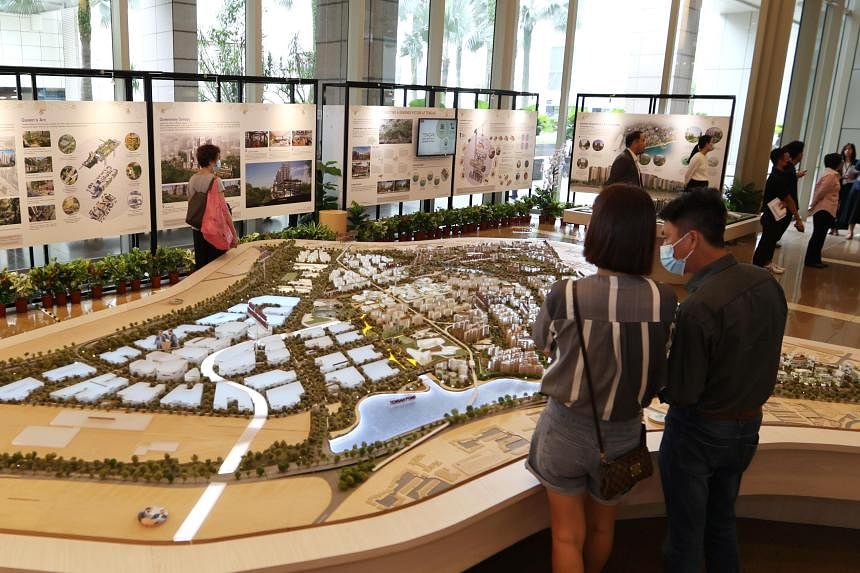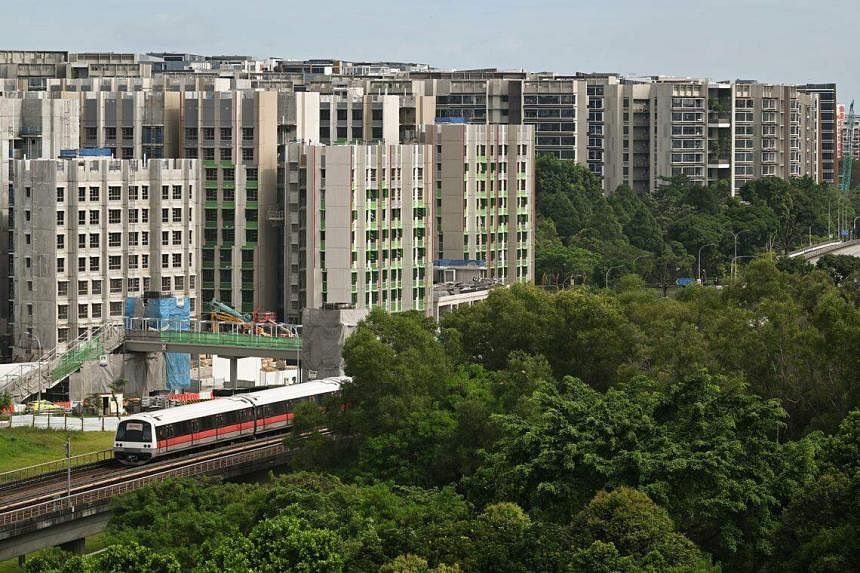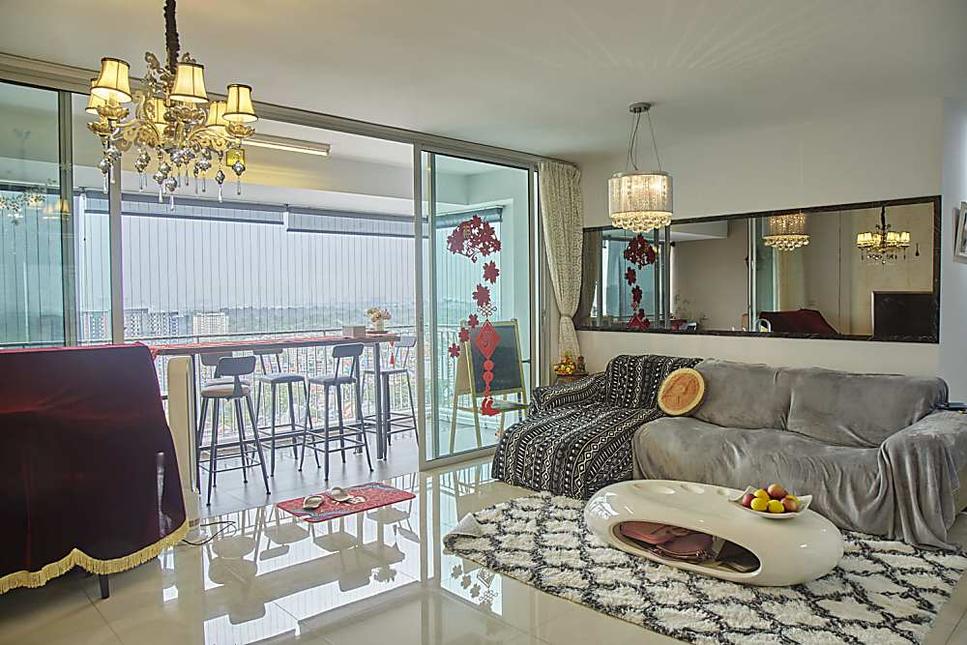Young Singaporeans should ‘right-size’ housing aspirations at each life stage
A focus on capital appreciation and concerns about future affordability may have led young Singaporeans to overextend financially in a bid to get their “dream home”

My wife and I bought our first Housing Board flat, a three-room resale unit, in 2000 while we were in our 20s.
It was an uncommon choice compared with the four-room or bigger units my peers more commonly preferred. But we selected a smaller, more affordable unit, given my plan to pursue education overseas.
My two children were born while we lived in the three-room flat. Space was sparse but sufficient for toddlers. They still have fond memories of living there and playing hopscotch in the common corridor.
We upgraded to a five-room flat in 2009, when my income improved, and the children got older and benefited from having their own rooms.
Shifting political social compact of housing
In Singapore, the provision of affordable and accessible public housing is the holy grail in the political social compact between the state and electorate.
With four in five Singaporeans living in one, and the vast majority being home owners, public housing is a social leveller and a key policy instrument giving every citizen, regardless of race or creed, a stake in the city-state.
In many ways, the role of public housing mirrors the critical junctures in Singapore’s progression from Third World to First. In the nascent years of national development, HDB flats provided no more than a functional set of home installations and access to basic neighbourhood amenities such as a market, transportation network and polyclinic.
But what started as a mission to build affordable shelter for the masses evolved over the years to complement other national imperatives as societal expectations shift and new considerations emerge.
What has endured is how much this journey to buying the first HDB flat remains viewed as a rite of passage. A signpost of adulthood, first-time home owners shoulder new responsibilities. For some, the purchase of a Build-To-Order flat is also synonymous with a marriage proposal.
Right-sizing versus capital appreciation
With Singapore’s rapidly ageing population and high cost of living, public housing today has gone beyond providing a basic roof over Singaporeans. The narrative has evolved to one of a retirement nest egg, a strategic means to future-planning and inflation-proofing, with home owners encouraged to monetise their HDB assets by moving to a smaller, more affordable flat.
This “right-sizing” narrative is supported by government-sponsored programmes such as the Lease Buyback Scheme (LBS) and Silver Housing Bonus (SHB). More than 9,700 households have sold part of their remaining leases under LBS.
While this right-sizing strategy offers a sound and balanced action plan to achieving fiscal prudence and sustainability, government communications on this message have been an asymmetrical narrative, targeted primarily at retirees.
At the other end of the age spectrum, young families, and newly-wed couples – the majority professionals, managers and executives – prefer living in at least an HDB four-room flat, and for some, in prime or highly sought-after locations.
According to PropertyGuru’s Singapore Consumer Sentiment Study in the second half of 2022, 44 per cent of HDB resale home buyers picked the largest jumbo flats as their preferred choice. Singaporeans aged 22 to 29 (54 per cent) are more likely to cite the lack of personal space as a reason for buying a home, than those aged 30 to 39 (48 per cent) and older.
The younger segment of home buyers seems less inclined to consider smaller, more affordable HDB three-room flats in non-mature estates, and is incentivised to look at larger flats.

Market forces or cognitive biases to blame?
Instead of practising a stepped approach to capital appreciation, to gradually relocate to larger units or more attractive districts as their careers take off, Singaporeans’ expectations on housing may have become increasingly unrealistic.
Anecdotally, younger house hunters aspire to buy their dream flats earlier rather than later in life. For some, this means stretching mortgage limits to own a prime property of their choice. The robust resale market and headline news on $1 million resale flats may have unproductively fuelled anxieties of losing out on a slice of the pie in the rat race.
On the surface, seeking out the largest, most valuable home for maximum gain seems sensible, given the broad, sustained rise in resale prices over time. For many young Singaporeans who desire living in the same home for decades, this plan seems logical. Larger HDB grants for first-timers buying resale flats announced last week in Budget 2023 should come as welcome relief.
But this narrative hides the true cost young Singaporeans incur in buying the perfect home – not least, the pressure to find the ideal flat and keep up with monthly loan repayments, and above all, giving zero allowance for financial fluctuations in mortgage repayment. Retrenchment, illnesses and other life changes can be disruptive.
Such a strategy also assumes housing resale prices will appreciate indefinitely – what psychologists would call having an overconfidence bias, where we tend to believe conditions leading to our desired outcome will always remain favourable.
The sense of optimism and focus on moving into the perfect home in the quickest time reflects the mood in today’s generation, where consumerism is depicted as a seamless experience, much like online shopping, and success is narrowly defined as living in spacious designer homes worthy of an Instagram post.
But for the sake of emotional well-being, financial health and work-life sustainability, we should consider a smaller, more affordable first home as an intermediary step to building up housing assets, and then right-size in the later part of one’s career.
Reining in runaway expectations
Although much has been framed as a temporary issue posed by a construction labour crunch during the Covid-19 pandemic, we have experienced past instances of demand driving up housing prices. Indeed, the buoyant market today feels like deja vu for older Singaporeans who have witnessed the cyclical fluctuations in the mid-1990s and 2010s.
More can be done to nudge young couples to exercise financial prudence in their first choice of home. And with government oversight on all public policy schemes, a differentiated strategy according to housing types can provide clear signposts on availability and affordability, and tweak benefits to incentivise people to choose a home of the right size.
For instance, HDB service and conservancy charges can be purposefully waived for three-room and smaller housing types.
Residents in non-mature estates and less popular heartland neighbourhoods such as Woodlands and Jurong can receive more incentives in the form of utility rebates compared with those in prime locations with a concentration of high-valuation and resale flats, such as in Queenstown, Bishan and Toa Payoh.
Similarly, home buyers of one- to three-room HDB flats, sensitive to financial incentives, can be nudged to upgrade or “right-size” to more spacious HDB flats after a minimum occupation period in their first home to free up the supply of smaller flats for the next generation of entry-level home buyers.
This approach can incentivise first-time home buyers to consider a broader range of homes and guide them to making fiscally sensible decisions, even as we recalibrate the housing social compact for a more sustainable future.
Last, while nudging younger home buyers with financial incentives is one approach, what is crucial is the signal from the Government that “right-sizing” can be a normative housing aspiration.
Right-sizing property expectations can help Singapore households ride through periods of economic uncertainty, and is a key message in housing policies aimed at retirees to unlock the value of their homes and meet their needs in their golden years.
Singapore is a capital-owning society, and HDB policy is a key enabler aiding the accumulation of wealth for most Singaporeans. There is no reason to believe our quality of life is inferior to that of the pioneer generation of Singaporeans, who bought their HDB flats at a fraction of today’s prices, if our economy continues to grow.
But on our own, Singaporeans can still achieve their dream residential asset, albeit taking intermediary steps, and right-size when the time is right.
Take it from me. Young parents worried that a small flat cannot support their family needs when they have young children can rest assured that toddlers need your time more than the space. And when that time comes, not being bogged down by concerns over mortgage repayments can be a good place to start from.
- Dr Leong Chan-Hoong is head of policy development, evaluation and data analytics at Kantar Public, a global policy advisory firm. He is Singapore’s national representative at the World Association for Public Opinion Research.
Join ST's Telegram channel and get the latest breaking news delivered to you.








No comments:
Post a Comment